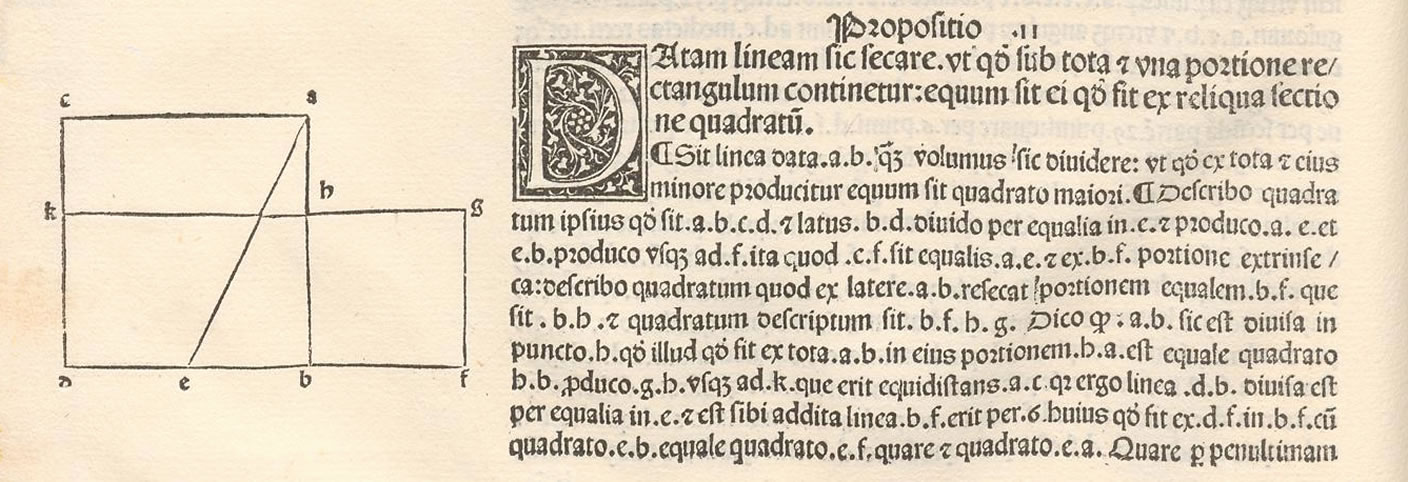Euclid – construction of the golden ratio

The external page "Elements" (1482 edition), written in thirteen books, i.e. thirteen chapters, is the most famous and scientifically most significant work by the Greek mathematician Euclid. After the Bible, it is the most printed and studied book in the history of the Western world.
Even today a large part of mathematical and geometrical elementary education is based on the Euclidean tradition. Euclid's "Elements" represents geometry as a logically self-contained system built on a handful of definitions, postulates and axioms. Besides the systematic representation of basic geometrical terms, it contains everything known at that time about number theory. Here too there were for the first time important findings on prime numbers.
- Books 1 to 4 deal with plane geometry and lead from the elementary properties of points, lines and angles among others to the Pythagoras theorem. In Book 2, Proposition 11, illustrated above, the construction of "a straight line cut in extreme and mean ratio", i.e. in the proportion now known as the golden ratio, is explained.
- Books 5 and 6 cover proportions and similar figures. The beginning of Book 6 also contains the definition of "a straight line cut in extreme and mean ratio".
- Books 7 to 9 are dedicated to arithmetic, i.e. the properties of natural numbers. Here you can find the "Euclidean algorithm" used to determine the highest common divisor of two given whole numbers.
- Book 10 deals with incommensurable magnitudes, i.e. irrational numbers.
- Finally, Books 11 to 13 cover spatial geometry and the five regular (platonic) solid figures.
As a problem from "Liber abaci" shows, Fibonacci was familiar – in Euclid's tradition – with the concept of proportion in accordance with what was first termed the golden ratio in the nineteenth century. But he did not make any connection between this ratio and the sequence of numbers that he found in the rabbit problem.